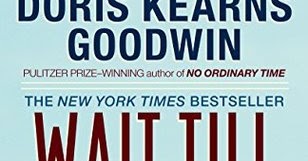

This experience gave her the traits of inquisitiveness and precociousness. If anything, it helped broaden her appreciation of her parents an unusual trait for a youngster.ĭoris grew up the youngest of three sisters by a number of years which thrust her into adult-type conversations. Neither parents’ situations seemed to hurt Doris’ relationship with her parents. Her father had experienced the death of two siblings and both parents, the last from suicide as a boy and was shipped off to a foster home. The book is about baseball, but baseball is not its central theme, far from it.ĭoris has nothing but wonderful memories of her parents each somewhat flawed, her mother dying at the age of 51 and being sick for most of Doris’ early life. She uses this baseball canvass to weave several distinct plot lines, involving family, community, catholicism, and world events. Goodwin uses the season-to-season rhythms of baseball to create the arch of her formative years. This memoir recounts Doris’ childhood in the 40s and 50s in Brooklyn and later in Rockville Center, NY. A favorite topic of mine–The Brooklyn Dodgers–by a favorite writer.

You can imagine mydelight when I came across a copy of her 1997 book Wait Till Next Year: A Memoir at a used book sale. I have also heard her speak on several occasions about her love for the Brooklyn Dodgers. I have seen Presedential historian Doris Kearns Goodwin appear many times on TV political talk shows.


 0 kommentar(er)
0 kommentar(er)
